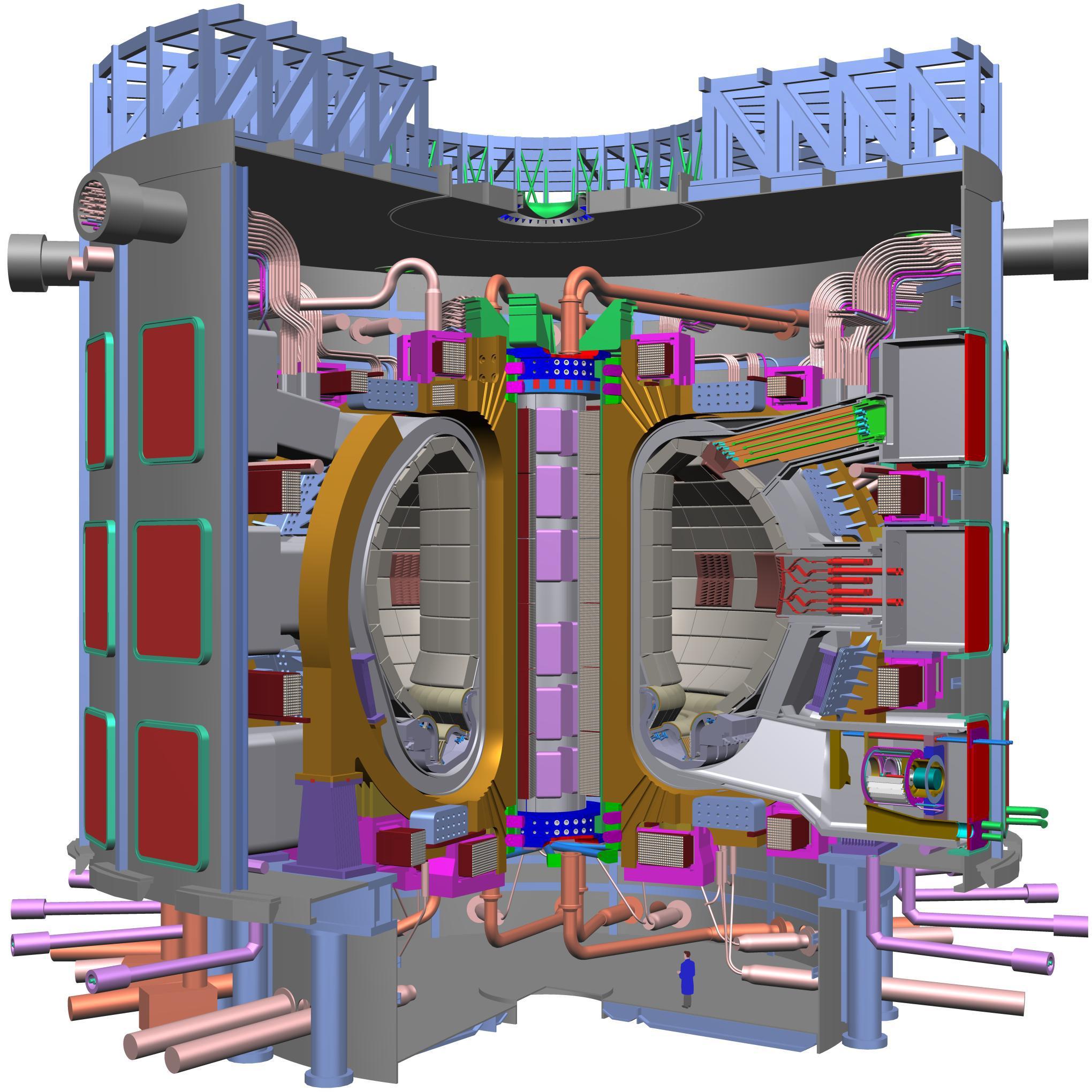I have blogged about the ITER project (International Thermonuclear Experimental Reactor) here. This twenty billion dollar experimental fusion reactor is being built at Cadarache, France by a consortium of nations. The basic design concept for the ITER is a tokomak which is a donut shaped chamber surrounded by magnets which confine and heat a plasma to the point where nuclear fusion occurs.
In order to achieve nuclear fusion, a plasma of fusion fuel has to be compressed and heated to at least one hundred and fifty million degrees Centigrade. Powerful magnets, microwaves and particles beams are being used to create these conditions. To date, no fusion reactor has ever produced more energy than it consumed. This is called the breakeven point. When fully operational, ITER is expected to produce five hundred megawatts from an input of fifty megawatts for several minutes.
ITER is not designed to produce any electricity. If and when ITER is successful, a prototype power generating fusion reactor will be built called DEMO. Design work is just beginning on DEMO but it is unlikely that it will be an international collaborative effort like ITER. Current plans call for it to be funded and constructed by the European Union. Korea is now working on its own fusion power reactor called K-Demo. China is working on its own fusion reactor which would an intermediate step between ITER and Demo. The Chinese project is called the China Fusion Engineering Test Reactor. Other nations are also working on experimental fusion reactors.
The budget for ITER has already tripled over the original estimate. The schedule for completion has been extended from 2016 to 2019. Officially, the first plasma generation is supposed to happen in 2020, but a British expert involved in the project recently said it would be 2025 before the first plasma generation and 2030 before it generated more energy than was being fed into it.
Eurofusion, the European agency which is responsible for fusion research in Europe, has recently published a "road map" of how to move from the ITER project to the DEMO commercial prototype for a fusion power plant by 2050. Although successful generation of the first plasma at ITER slated for 2020 will be a major breakthrough for fusion research, the road map lists a challenging series of technical problems that must be solve before commercial fusion power can become a reality.
One of the biggest challenges for fusion reactors is how to remove the heat from the reactor. Tokomak fusion reactors have a device called a diverter at the bottom of the plasma chamber that removes spent fuel. The diverter is the only place in the reactor where the hot plasma actually touches a surface so it has to be able to withstand enormous heat. The ITER diverter is constructed from stainless steel and coated with tungsten. While this may work for ITER trial runs of a few minutes, DEMO will run continuously producing gigawatts of energy and the ITER diverter will not be able to take the continuous high temperatures. New designs will have to be developed and tested.
Another technical problem has to do with what is called the "tritium blanket." This is a section of the plasma vessel's wall where neutrons generated by the fusion process convert lithium to tritium which is one of the fuels for the reactor. This will also require more research, development and testing.
As a backup plan in case ITER does not deliver the results expected, the road map calls for continuing work on fusion reactors other than the tokomaks. Germany is working on the Wendelstein 7-X stellarator which will be finished in 2016. There are plans to use what is learned on the stellarator to create a power producing reactor which will be called HELIAS.
Artist's concept of ITER:
